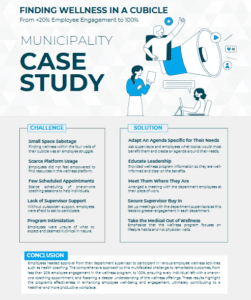Stress Management Strategies to Use During Office Hours 
Stress is an inevitable part of the workplace but managing it effectively can make a significant difference in your overall well-being and productivity. Here are some practical stress management strategies you can use during office hours to help you stay calm, focused, and efficient.
Organize Your Workspace
- A cluttered workspace can contribute to stress and reduce productivity. Take some time to organize your desk, declutter unnecessary items, and create a clean and orderly environment. This can help you feel more in control and focused.
Follow the 20-20-20 Rule
- Every 20 minutes, look at something 20 feet away for at least 20 seconds. This helps reduce eye strain and helps refresh your mind and prevent burnout. Pair this with a 3–5-minute break every 60 minutes to do some light stretching and get a drink of water throughout the day.
Practice Mindful Breathing
- Mindful breathing exercises can be a powerful tool to manage workplace stress. Taking a few minutes to focus on your breath can help calm your mind and reduce anxiety. Try the 4-7-8 technique: inhale for 4 seconds, hold your breath for 7 seconds, and exhale for 8 seconds.

Prioritize Tasks
- Effective time management is crucial for reducing stress. Start your day (or the day before) by prioritizing tasks and creating a to-do list. Focus on completing high-priority tasks first and break larger projects into smaller, manageable steps. Every journey begins with the first step.
Practice Gratitude
- Gratitude journaling can help shift your focus from stressors to positive aspects of your workday. Take a few minutes each day to write things you are grateful for, whether it’s a supportive colleague, a successful project, or a pleasant interaction.
Set Boundaries
- Setting boundaries with colleagues and supervisors is essential for stress management. Learn to say no when necessary and communicate your limits. This can help prevent overcommitment and ensure you have time to focus on your well-being.
Stay Hydrated and Eat Healthily
- Proper nutrition and hydration play a huge role in managing stress. Keep a water bottle at your desk and drink regularly throughout the day. Studies show that as many as 75% of people may be chronically dehydrated, don’t be one of them. Opt for healthy snacks like fruits, nuts, and yogurt to maintain your energy levels and avoid stress-induced cravings. If you want to perform your best, make sure to fuel your body for success.
Practice Relaxation Techniques
- Add relaxation techniques such as progressive muscle relaxation, visualization, or meditation into your daily routine. These practices can help reduce physical tension and promote a sense of calm. Even a few minutes of relaxation can make a significant difference in managing stress.
Conclusion
Managing stress during office hours is essential for maintaining your well-being and productivity. By incorporating these practical strategies into your daily routine, you can create a more balanced and stress-free work environment. Remember, small changes can lead to significant improvements in your overall mental health and job satisfaction.
























